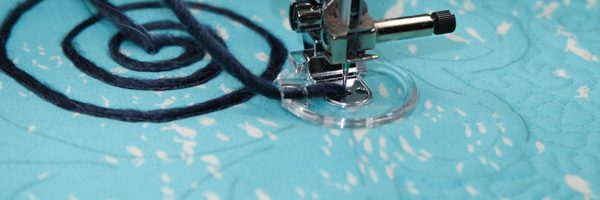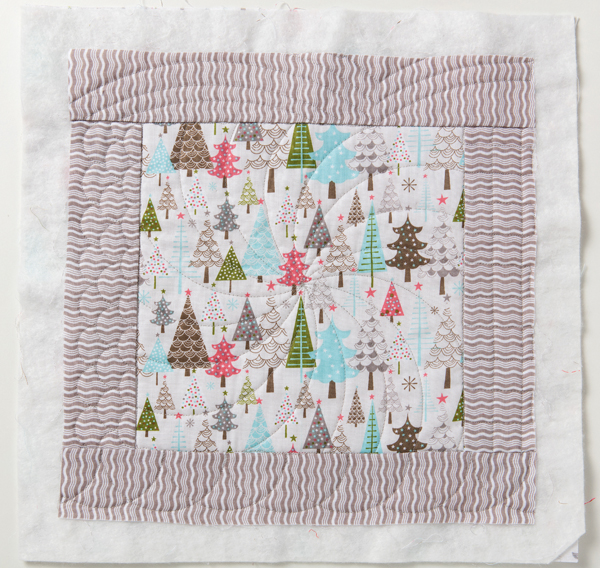
Westalee Ruler Foot & Quilting Templates for Domestic Machines
Michelle Marvig shows how to use Westalee ruler foot and quilting templates for domestic machines.
In 2008, Leonie West designed her unique set of Westalee adjustable quilting rulers after becoming frustrated with traditional tools. These rulers went on to be featured on the ABC’s New Inventors in that year and won the Grand Final People’s Choice Award. Not a girl to rest on her laurels, Leonie has been working on another great invention for quilters: a ruler foot for domestic sewing machines. This foot is like a hopping foot used on longarm machines and is designed to be used with shaped, acrylic templates for free motion, decorative quilting designs.
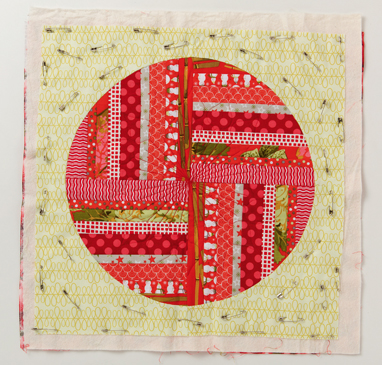
The ruler foot comes in four versions: a low, medium, high and high-shank special. You will need to purchase the correct foot for your machine as the amount of room at the bottom of the presser foot rod varies and it will affect the clearance of the ruler foot. No matter which version of foot you have, the foot is a round metal ring, just over ⅛in thick and ½in diameter.
It has a small curved section that attaches it to the bottom of a vertical shaft, with an opening on the side where you screw the foot to the sewing machine. A square adjustment guide comes with the foot to help you correctly position the foot at the right height when attaching it to the machine.
The foot is designed for free-motion quilting with the use of rulers — the edge of the foot runs around the edge of the rulers — which is why it is so thick. If you have a Bernina machine with the stitch regulator (BSR), you will not be able to engage it with this foot on the machine as BSR requires the true Bernina foot to be used and plugged in.
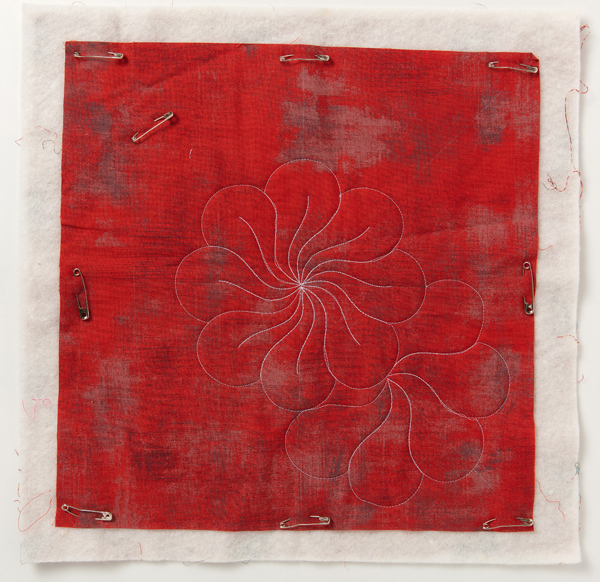
Create a quilt with different precut fabrics!
Once the foot is on the machine, the first step is to lower your feed dogs for free-motion work. As we are on a domestic machine, we still need to move our quilt under the needle and the ruler foot. I would suggest preparing a practice piece of quilt sandwich to play on. Try free-motion quilting with just the foot, no rulers. Once you’re comfortable with the foot for general free-motion quilting, try a Westalee quilting template.
There is a wide variety of templates available and they all work in the same general way. The ruler foot runs along the thickness of the edge of the quilting template. This means you are going to hold the quilting template in place on the quilt. You will then push/manoeuvre the template and quilt around the ruler foot to create your line of quilting.
Westalee has excellent video tutorials available for all of the quilting templates to demonstrate how to use each design. Some designs, such as Spin-e-fex Feathers, require you to start and stop at different points. Many require backtracking or stitching back over an area already quilted. This is not a problem if you hold the template steady. (I would strongly recommend the addition of some Stable Tape, an adhesive rubber grip strip that can be cut into smaller pieces and stuck on the underside of the quilting template to stop it moving while you are quilting.)

Katrina Hadjimichael’s Jelly Friends quilt will help you use up your precut fabrics in no time.
Some templates rotate to create the designs and you move the template when you have completed each smaller section. Reference lines are required to be drawn for some designs and they are critical to ensure that the start and finish of the design meet up correctly. Certain designs come with a pin, which looks like a thumb tack. It is placed under the quilt sandwich and comes up through the centre of the reference markings made on the block.
There is a small hole located on the inner section of the template that is placed over the pin. A Pin Locking Disc is placed over the top to secure. This ensures you are rotating the template from the same point.
For all quilting templates you will need to move the template several times to complete the design. The idea of the templates is that you do not turn the quilt, but rotate the templates instead. The result is that you are free-motion quilting in all directions and around the centre of the design if it is circular in nature. Feathers require a spine to be quilted first, then the individual feathers stitched down the spine.
Multiple sizes of feather shapes are provided in the one pack to allow you to fit feathers in any place. You can stitch in the ditch with the ruler foot using the straight-edge ruler. The ruler needs to be moved along as you stitch.
Definitely check your pressing before you layer the quilt. I also found it necessary to raise the foot slightly when working on a heavily pieced sample as the foot just needs to float over the surface, and not push around and bunch up the extra thickness of the top fabric.
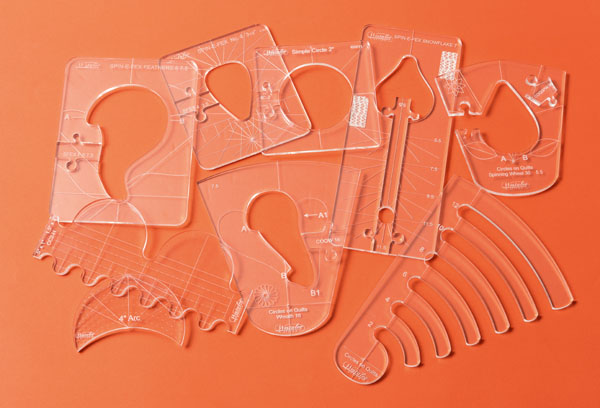
This is easily done by simply loosening the screw and moving the foot up just slightly. As the foot doesn’t have a fixed height, you can adjust to quilt any thickness.
The ruler foot and the Westalee quilting templates vastly expand your options for free-motion quilting. I recommend that you use an extension table for your sewing machine. The templates need to rest on the table and be moved around in all directions. Also, the addition of a Teflon sheet, such as a Supreme Slider, on the extension table lowers the friction and makes it easier to move the quilt sandwich.
A machine with auto needle down makes it easier to stop exactly where you want to so that you can reposition the template. However, due to the size of the foot you cannot needle down with the foot raised — there is not enough clearance. It’s not necessary to do this, however I found I did it accidently and my machine made a funny noise and simply came up with an error message. Nothing broken, fortunately. (I knew not to do it as it is mentioned in the instructions, but I was so keen to play!)
I found some designs easier than others the first time I tried them. This is not a criticism, just an observation. It’s just like saying that I find some freehand designs easier to free-motion than others and need more practice to get them right. All of the Westalee designs are free motion, and with free motion the mantra is practice, practice, practice.
While you’re honing your skills, try matching your quilting thread to your fabrics — this will “camouflage” your stitches while you’re getting accustomed to the foot and templates. And finer thread will not show up the backtracking as much as a thicker thread.
I have already gone over my quota of words for this article, but there was so much to discuss! To see the ruler feet and quilting templates in action, check out westalee.com.au. You can find the full range of products available here with links to the video tutorials. Or Leonie can be found demonstrating at many of the craft shows around Australia.


